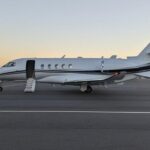New Zealand has reinforced its place in the global aerospace industry with the opening of the Tāwhaki National Aerospace Centre and new sealed runway at Kaitorete.
The new infrastructure coupled with technical support will super charge the country’s fast-growing aerospace sector and help meet international demand.
Domestic and international companies are already testing and trialling leading-edge technologies at Kaitorete, a short 50-minute drive from Ōtautahi Christchurch CBD and now more crafts and companies can take flight.
US-based Wisk Aero recently conducted its world-first airspace integration test flights for an uncrewed aircraft from Kaitorete and Dawn Aerospace and Kea Aerospace will now be able to conduct horizontal space launches and stratospheric flights from the site.
The new 1-kilometre runway and planned hangar facilities were funded by a $5.4 million grant from the New Zealand Government’s Regional Strategic Partnership Fund, administered by Kānoa. This joins a sealed taxiway and fuel pad, grass runway, vertiport, office facilities and data connections.
Tāwhaki Board Member David Perenara-O’Connell said mana whenua (indigenous people) of Kaitorete were proud to be at the forefront of supporting the country’s aerospace sector and acknowledged their partnership with the New Zealand Government in the Tāwhaki Joint Venture.
“To fully enable the sector, supply chains and realise the economic benefits for all New Zealanders, takes a collaborative approach. We’re grateful for the support of our government, local authorities, regulators, aerospace partners, research and science communities, and suppliers who share our vision of a world-leading hub for innovation and exploration.
“We believe that this mission is truly unique. The way in which we weave together mātauranga Māori (indigenous knowledge) with cutting-edge innovation in aerospace and environmental rejuvenation, marks a new era in sustainable land use.”
New Zealand is one of the top countries for space launches and aerospace testing and trialling, with an advanced and responsive regulatory environment, sparse population and low air and sea traffic.Subscribe to the FINN weekly newsletter

